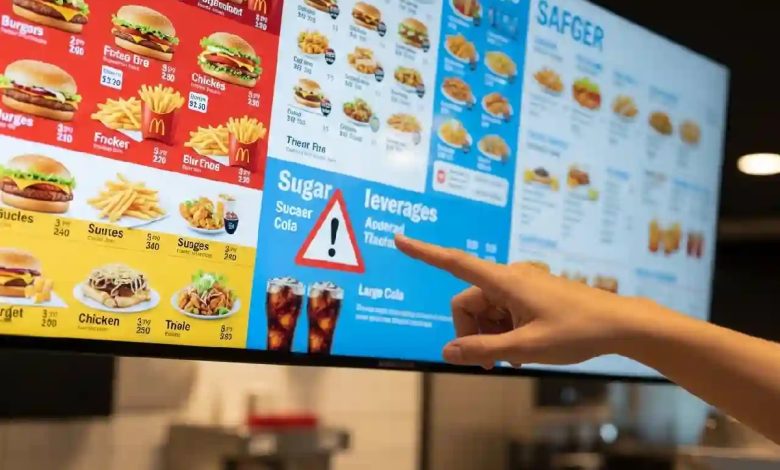New York City Launches Groundbreaking “Sweet Truth” Law: Sugar Warning Labels Added to Fast-Food Menus
A first-of-its-kind initiative in the U.S. aims to help New Yorkers make informed dietary choices by identifying high-sugar items in restaurant menus.

New York City has rolled out a pioneering initiative to help consumers make more informed food choices — new warning icons for high-sugar items on fast-food menus. This policy, the first of its kind in any U.S. jurisdiction, is designed to highlight drinks and snacks that exceed the recommended daily intake of added sugar, empowering residents to make healthier choices.
However, early observations suggest that the effectiveness of the small black-and-white sugar icons in capturing consumer attention and influencing buying habits remains uncertain.
The warning symbol — a small white spoon inside a black triangle — was introduced following the passage of the “Sweet Truth Law” in 2023. Under this local law, restaurant chains with at least 15 locations citywide must display these icons next to any menu item containing more than 50 grams of added sugar.
This threshold matches the federal dietary guideline for the maximum daily sugar intake, underscoring the high sugar content in many popular fast-food offerings.
Experts Split Over NYC’s New Sugar Warning Icons
City health officials and public health advocates have praised the measure, calling it a critical step toward public health promotion and consumer education. A spokesperson for the New York City Department of Health emphasized the city’s long-standing commitment to ensuring residents have access to vital nutritional information. They noted that even one large sugary drink can easily exceed the entire recommended daily sugar limit, making these warnings especially relevant.
The sugar warnings now appear alongside existing calorie counts and sodium alerts — the latter often symbolized by small salt shaker icons. The broader goal is to create an informative menu environment, allowing customers to quickly assess the nutritional impact of their choices.
Despite optimism from city officials, some public health researchers have expressed skepticism. Previous efforts to influence fast-food consumption through menu labeling have shown mixed results. One population health professor at a leading New York university criticized the subtle design of the new sugar icon, suggesting that a larger red symbol with text might be more effective in drawing consumer attention. “Noticing it is the first step,” he said, “because it can’t have an impact if no one sees it.”
Currently, the regulation requires restaurants to display general health warnings about excessive sugar consumption, which can lead to type 2 diabetes, obesity, and tooth decay. However, the icons themselves appear without explanatory text, leaving customers to infer their meaning or rely on external knowledge.
Initial field observations at several fast-food chains in Lower Manhattan — including popular burger and taco outlets — revealed inconsistent implementation. For example, while some sodas displayed the sugar warning, certain high-sugar milkshakes were exempt, revealing gaps in the current scope of the law.
Customer reactions have been mixed. Several patrons admitted they hadn’t noticed the new icons. A Bronx teenager who frequently visits a major fast-food chain said she didn’t see the symbol next to her medium soda — which contains far more than the daily sugar limit. “It’s a good idea for others,” she said, “but I’ll probably still order the same thing because I already know what I’m getting.” Another customer, a software engineer, echoed the sentiment, saying that a more eye-catching design might make him stop and reconsider his order.
The Sweet Truth Law currently applies only to prepackaged or standardized items such as bottled sodas and fountain drinks. As a result, many high-sugar blended beverages, like shakes and floats, often escape the labeling requirement despite their sugar-heavy content.
State legislators are already exploring potential expansions to cover a broader range of sugary products. Meanwhile, a research team funded by the National Institutes of Health is studying the law’s impact by analyzing receipts before and after implementation. Researchers expect modest but positive effects, noting that consumers tend to be more deliberate when grocery shopping than when ordering fast food.
A 2023 study on New York City’s earlier sodium warning icons (introduced in 2016) found reduced sodium consumption at full-service restaurants but little change at fast-food outlets.
A campaign director for a public interest group called the law an important opportunity for consumers to understand the sugar content of what they eat and drink. She emphasized the need for ongoing public awareness campaigns and suggested that the health department could adapt the symbol’s design based on early findings.
Restaurants that fail to comply with the new regulations will face fines starting next year.



